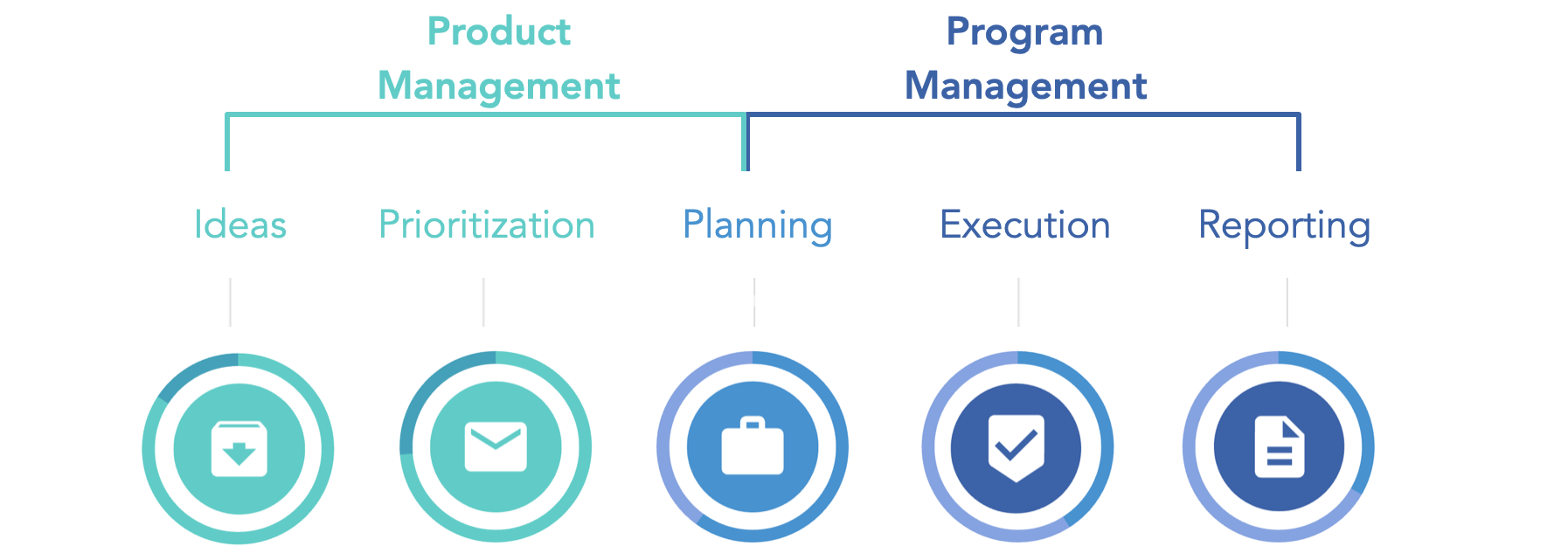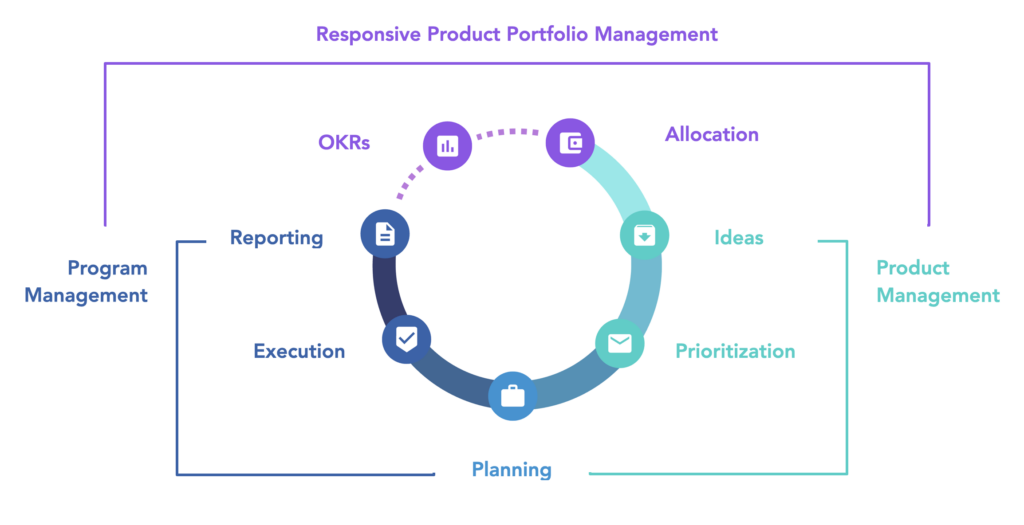The Role of The Product Manager & Program Manager
Ever wondered what the key differences are between a program manager vs product manager and how the two roles interface with one another?
Product management focuses on the why and what. Product Managers look at the problems that need to be solved (why) and the product features that can solve them (what). The skills around generating product ideas and prioritizing them are key to product management success.
To communicate their vision, product managers often create product roadmaps, a visual “wish-list” of the desired sequence of product features.
Program management focuses on the when and how. They look at the planning, resourcing, and trade-off of competing product features given the limited resources (when). Then they also look at the sequencing of the suite of product features given priority, dependencies, and changes/ interruptions (how).
Product managers focus on the why and the what of building products while program managers focus on the when and the how.
There are also additional elements of “the how”, such as user experience, engineering solutions, and go-to-market approaches. These “hows” are incorporated into the program plan, (aka Execution Roadmap). This serves as a substantiated product roadmap that includes all the essential elements for a successful delivery.
Most product managers work with a dedicated team, whereas a program manager may work across multiple product teams and product managers and is often aligned with a Director or VP of Product. In companies without a dedicated program manager, a product manager will often program manage her own product and programs. In some companies, there are individuals or teams that serve the product operations role which covers some program management responsibilities.

The Role of The Product Portfolio Manager
Portfolio management focuses on orchestrating product management plus program management across multiple areas to define and achieve the best outcomes as agreed upon by the portfolio stakeholders.
Portfolio management starts with defining and aligning goals and strategies facing the portfolio participants. Next, they identify allocations to help guide and inform the product and program planning.

The Difference Between Traditional and Responsive Product Portfolio Management
Responsive product portfolio management is one step further than product portfolio management because it adds goals and outcomes into the portfolio process. So goals are based on the results from the previous iteration to guide subsequent rounds of allocation prioritization and execution. Thus, it creates a closed-loop product portfolio cycle where outcomes and results influence future strategy, priority, and roadmaps.

It’s easy to understand the portfolio management skills needed when running a budget consisting of millions of dollars in large enterprises for multiple product lines. But it’s also crucial for small companies to treat their product as a portfolio.
A product manager in a software startup with three engineers also plays the portfolio manager role. How so? A digital product, as the end-user knows it, is often multiple products from the company’s point of view because it serves multiple personas and use cases. Take a mobile game app, for example, it’s a completely different product for a consumer, advertiser, and admin.
The Future of The Product Organization
A product manager’s job is more than building products that customers love. A product manager’s job is to build the right product, for the right customers, at the right cost and time, so that the company can achieve its business goals.

This requires the responsive product portfolio management framework – the ability to connect business goals, customer needs, product strategies, resources, and execution with outcomes.
As every product organization needs to juggle many business goals, customer needs, and so on, portfolio management is needed by every product organization.
Traditional product portfolio management (PPM) relies on expensive tools that take months to implement, an army of people to maintain, and months to make changes.
Dragonboat democratizes product portfolio management – it’s lightweight, economical, and quick to implement. The Dragonboat platform seamlessly integrates with popular agile tools like Jira, Github, Asana and Shortcut. It requires no process or tooling changes to existing engineering practices.




